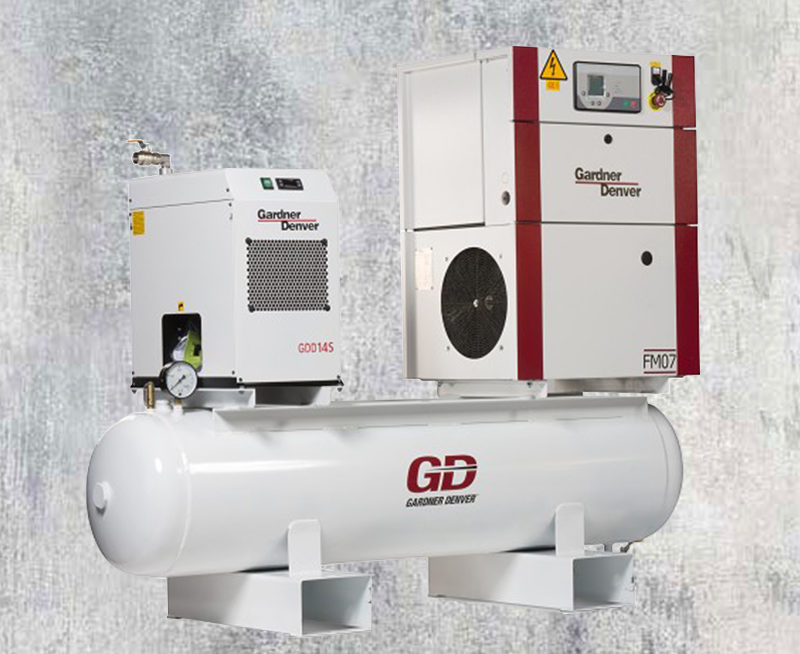Air compressors work by reducing (compressing) the size of ambient air and forcing the air molecules to fit closely together in a small chamber. As these gas molecules increase in quantity, the mass, density, and pressure increase. The resulting pressurized air is stored in a tank until ready for use. The pressurized air created is a powerful energy source when released from the tank to run pneumatic tools and equipment, from inflating your tires to operating a transport network.
One type of air compressor is the Reciprocating air compressors, which are also called piston compressors. This type of compressor uses pistons, steered by crankshafts, to reduce the volume of air through the process of reciprocation, where the pistons move back and forth inside the cylinders to compress the air. It is a positive displacement compressor. This compressor is widely popular because of its versatility in application. It will perform efficiently and effectively as long as it is designed, installed, and operated properly.
How does it work?
Once the compressor motor is turned on, the crankshaft will start to rotate. This rotation will cause the pistons to move up and down inside the cylinder. The downward motion of the piston takes up atmospheric air to enter the chamber of the cylinder. As the piston moves up, the compression process starts, and pressure increases. When the pressure inside the cylinder exceeds the pressure rating of the discharge valve, the discharge valve opens up and the pressurized air is released from the cylinder into the storage tank.
What are the two basic configurations of reciprocating air compressors:
- Single-stage air compressor
This compressor has a single-cylinder, compresses gas only once, and has one discharge per crankshaft revolution. Because of this process, it is used by operators that do not need a continuous operation. This compressor typically comes in smaller sized units that can be easily transferred from one location to another. Hobbyists and small workshops will work well using this compressor.
2. Two-stage air compressor
As the name implies, this type of compressor compresses air in two stages with double pressure. It is also called a dual-stage compressor for the same reason. It makes two discharges per crankshaft revolution, can handle more pressure, and has a higher power capacity. While in the single-stage compressor, the pressurized air is delivered to a storage tank, in the two-stage compressor, the air is sent to another piston for a second stroke. Afterwhich, the double-pressurized air is cooled through a heat exchanger and sent to the storage tank until use. Facilities and operations which employ high-power equipment and tools and run complex processes will benefit from this type of air compressor.
Applications of Reciprocating Air compressor
- Spray painting shops
- Cleaning machine shops
- Pneumatic tool operation
- Service stations cleaning cars
- Coal mines
- Food Manufacturing
- Beverage plants
- Auto manufacturing plants’ assembly lines and maintenance
- Woodwork and metalwork
- Catering, food assembly, and packaging line
- Military, Artillery construction
- Aircraft
Pneumatic tools and equipment were proven to be indispensable in operating small to large-scale operations, whether you are a starting hobbyist or an experienced plant operator. However, regardless of the size of your operation, it is important to know what you need before you make any investment. Allow us to help you make that decision. Call us now, and let us walk you through the process, from the audit of your facility to the installation of your air line system. We will ensure you will not miss a step.



